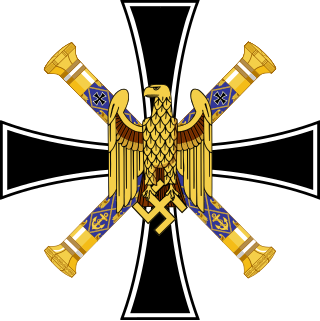 W
WThe German Imperial Admiralty was an imperial naval authority in the German Empire. By order of Kaiser Wilhelm I the Northern German Federal Navy Department of the North German Confederation (1866–71), which had been formed from the Prussian Navy Department (Marineministerium), became on 1 January 1872 the German Imperial Admiralty. The head of the Admiralty administered the Imperial Navy under the authority of the imperial chancellor and the supreme command of the Emperor. It lasted until 1889, undergoing several reorganizations, but proved an impractical arrangement given the constant growth and the expansion of the Imperial Navy. Finally it was abolished in April 1889 and its duties divided among three new entities: German Imperial Naval High Command, the Imperial Naval Office (Reichsmarineamt), and the Imperial Naval Cabinet. The Imperial Naval High Command was, on 14 March 1899, replaced by the German Imperial Admiralty Staff, which simply transferred over most of the personnel of the Admiral Staff detachment of the former Naval High Command.
 W
WThe German Imperial Naval High Command was an office of the German Empire which existed from 1 April 1889 until 14 March 1899 to command the German Imperial Navy. A similarly named office existed in the Prussian Navy and the Kriegsmarine of Nazi Germany.
 W
WThe Inspector of the Navy is the commander of the Navy of the modern-day German Armed Forces, the Bundeswehr. Since the various bodies responsible for the high command of the German Navy were merged in 2012, the Inspector has been based at the Navy Command at Rostock. Before then, the Inspector was head of the Naval Staff of the Ministry of Defence, based in Bonn. Both the Inspector and his deputy hold the rank of vice admiral.
 W
WThe Oberkommando der Marine (OKM), translated as High Command of the Navy or Upper Command of the Navy, was the high command and the highest administrative and command authority of the Kriegsmarine. It was officially formed from the Marineleitung of the Reichswehr on 11 January 1936. In 1937 it was combined with the newly formed Seekriegsleitung (SKL). There were two major re-organisations, in November 1939 and May 1944.
 W
WLutz Feldt was Inspector of the Navy from 2003 to 2006.
 W
WGert Gustav Paul Jeschonnek was an officer in the Kriegsmarine during World War II. Following World War II, he became commander of the post-war German Navy.
 W
WAndreas Krause is a Vizeadmiral of the German Navy of the Bundeswehr, and the current Inspector of the Navy. He previously served as a U-boat officer, as a staff officer in the Bundeswehr and NATO, as commander of the German Navy's 1st Flotilla and the Maritime Task Force for the United Nations Interim Force in Lebanon, and as Deputy Inspector of the Navy.
 W
WGünter Luther was a German admiral who became Inspector of the Navy and Deputy Supreme Allied Commander Europe for NATO. During World War II, he served as a military pilot in the Kriegsmarine and a paratrooper in the Luftwaffe. After the war, he joined the newly founded West German Bundesmarine in 1956.
 W
WHans-Joachim Mann is a retired German Vizeadmiral and former Inspector of the Navy from 1986 until 1991.
 W
WWolfgang Edgar Nolting is a retired German Vizeadmiral and former Inspector of the Navy from 2006 until 2010.
 W
WFriedrich Oskar Ruge was an officer in the German Navy and recipient of the Knight's Cross of the Iron Cross of Nazi Germany. He served as the first commander of the post-war German Navy.
 W
WDieter Wellershoff was a German admiral and Chief of Federal Armed Forces Staff from 1986 until 1991.
 W
WKarl-Adolf Zenker was an officer in the Kriegsmarine during World War II. He served as a member of the Naval Historical Team and later became commander of the post-war German Navy.